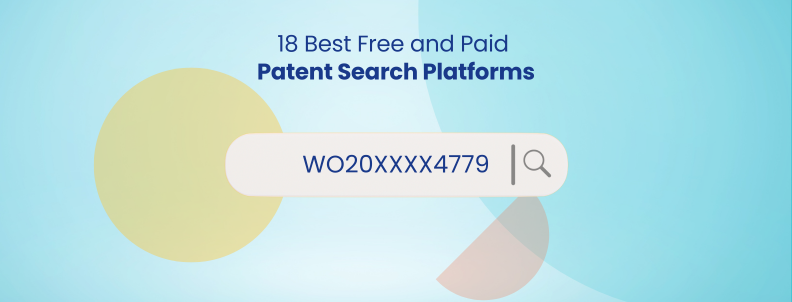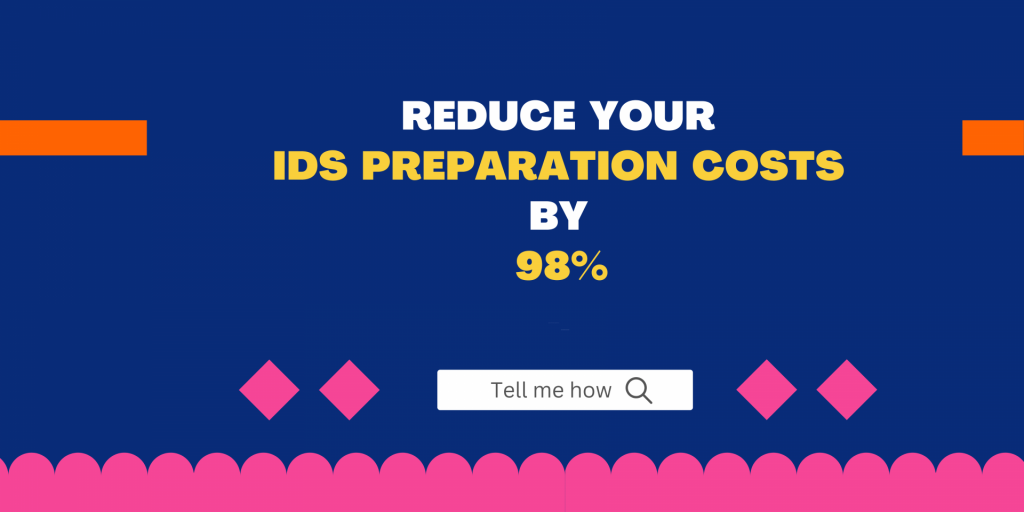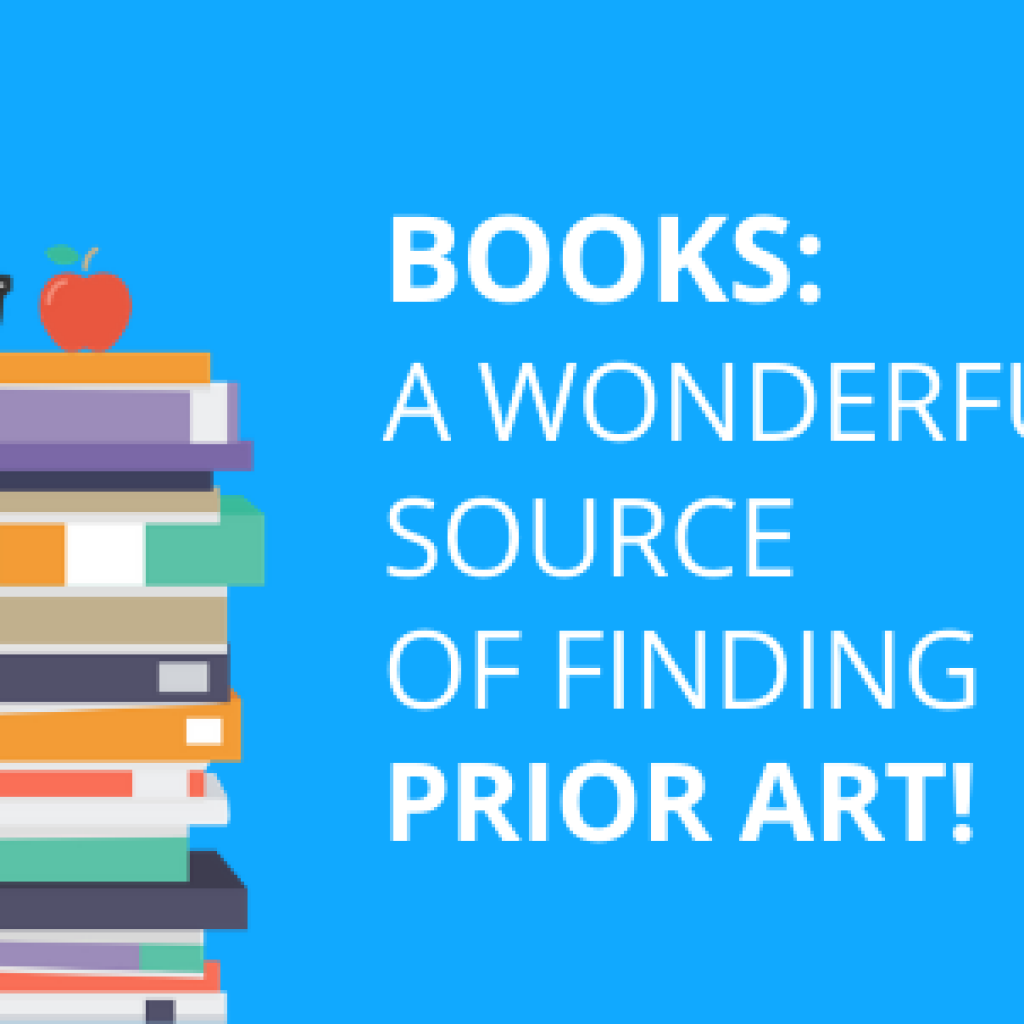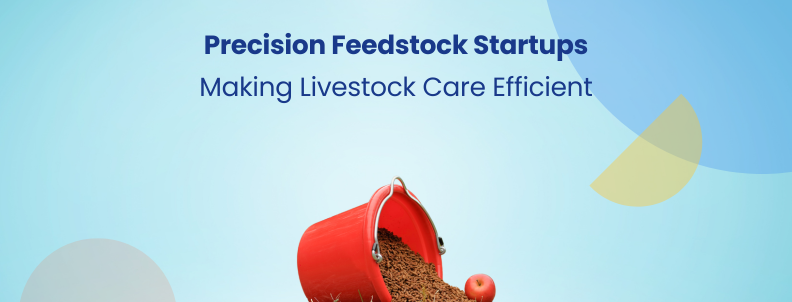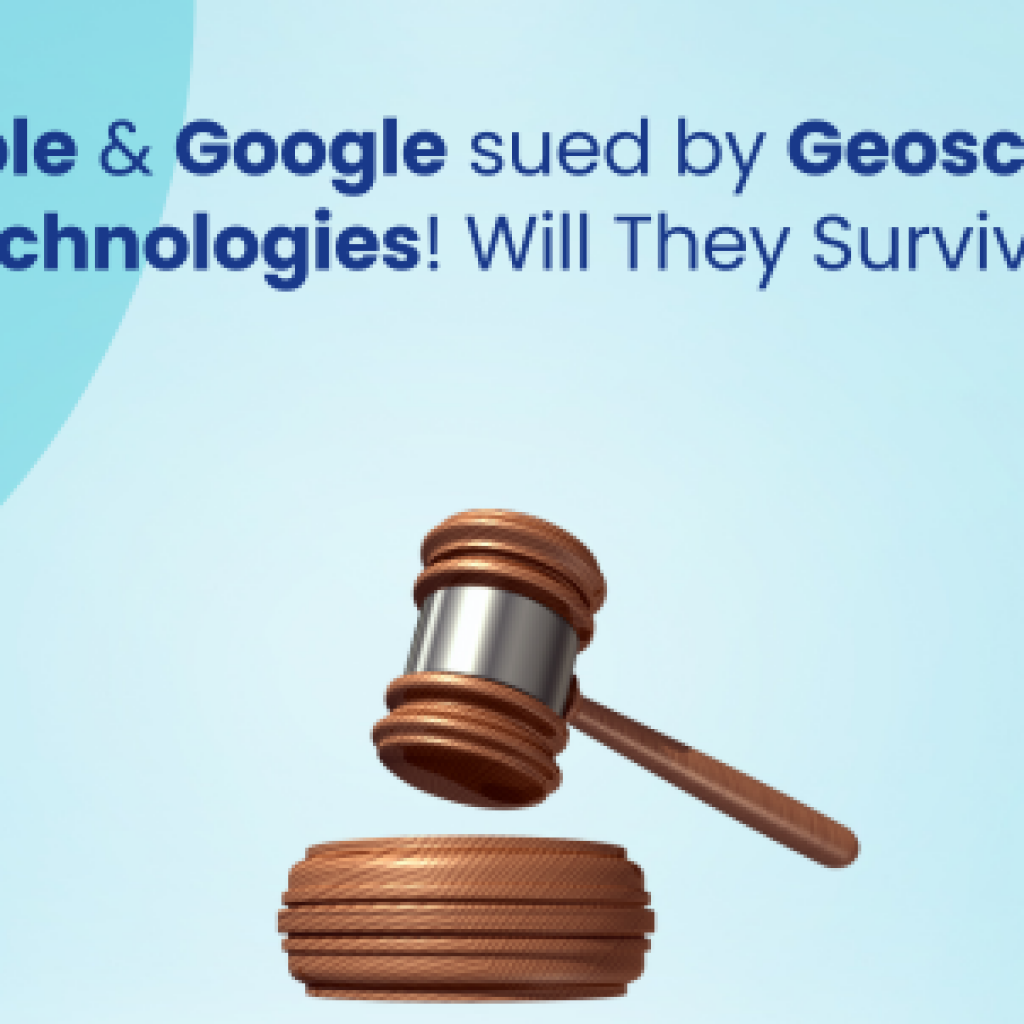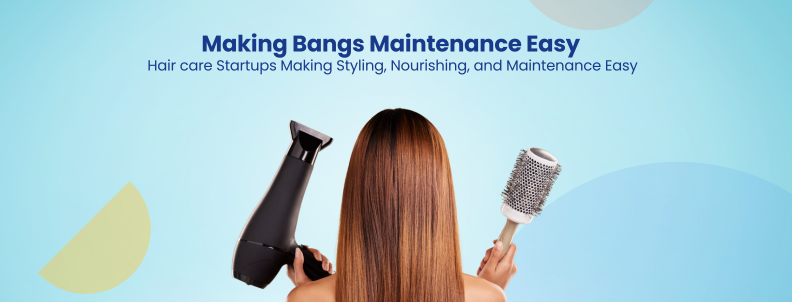The choice of patent databases highly depends on the motive beneath it, or in other words, the type of patent search involved. For instance, for a prior art search that is for current litigation, you would want to choose a patent database that covers the patent documents of most of the patent offices. Exhaustiveness is going to be the key for you here.
Similarly, for the freedom to operate search – which depends on particular geography – you might want to use a patent database that provides the patents of that specific country in the best searchable manner. For example, few patent databases have indexed German patents very well, and there are few who have mastered the same for China.
So you do not want to be generic here and just go with one basic database. And if you prefer a patent search platform with a good user interface, especially where your objective is to capture some quick leads, Google Patents might seem to be the go-to choice. Furthermore, for a particular industry, a specialized patent database that covers the patent records of that industry would feel like the right choice.
We look up patents for various reasons, and it is important to find the ideal database or tool which meets your needs and synchronizes with your motives. However, looking for the ideal patent database can be pretty intimidating if you aren’t fully aware of the features it offers. This, in turn, makes your patent search difficult.
Our report can help you learn advance patent searching, fill out the form below to get the patent search guide.
To make your life easier and your searches better, we have compiled a list of patent databases, both free and commercial, with a brief overview, so you can figure out which database is best for you. Additionally, we have created a section that contains patent databases based on the region.
List of Free Patent Databases
Free patent search websites are ideal for gaining quick leads. It makes no sense to pay hefty amounts for a gigantic database only to search for a patent or two. Below listed are a few free patent databases that might help you in your pursuit of patent data search and analysis.
- Google Patents
- Espacenet
- USPTO Web Patent Database
- PQAI
- Patentscope by WIPO
- WIPO’s INSPIRE
- Lens.org
Google Patents
Launched on 14 December 2006 as an experiment, Google Patents started with just a repository of patents. It quickly became a preferred option for most of the people in the industry because of its speed in accessing a patent. Back then, if you had to read a patent, you would avoid reading it on USPTO or Espacenet – they were slow and provided a bad user interface. Google got this one thing right and stuck to it.
If you have a patent number that you want to read, all it requires is to enter that patent in the address bar of your Chrome browser and press enter. The first result would always be a direct link to the patent. This made reading a patent a two-click job which was earlier very cumbersome.
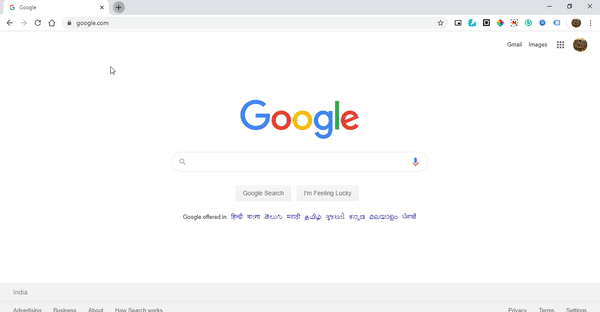
Over the period of time, Google patents started working on its coverage, and now it indexes more than 87 million patents with full text from the patent offices of 17 different countries, including:
- United States Patent and Trademark Office (USPTO)
- European Patent Office (EPO)
- China’s National Intellectual Property Administration (CNIPA)
- Japan Patent Office (JPO)
- Korean Intellectual Property Office (KIPO)
- World Intellectual Property Organization (WIPO)
- Deutsches Patent- und Markenamt (DPMA)
- Canadian Intellectual Property Office (CIPO)
- And patent data from various other patent offices of countries, including Russia, the UK, France, Spain, Belgium, Denmark, Finland, Luxembourg, and the Netherlands.
Google Patents allows you to search patents on the basis of the following variables –
- Search terms
- Date
- Assignee
- Inventor
This can be further classified with the following filters –
- Patent Office
- Status (granted/applied)
- Type (patent/design)
While looking through a particular keyword, you can open a patent in the sidebar while keeping the list of patents intact.
Google also gives you the option to look for non-patent data, like data from Google Scholar, such as research papers on the searched keyword. It also offers the option to save the patents in the form of a PDF. If you come across a patent in a different language, worry not, as Google patents can translate the patent’s language to the language of your choice. By the way, do you know that Google patents can translate Chinese patents into English better than any other commercial databases available in the market?
Google also provides its users with an illustrative graph on the keyword, which you can view on the basis of assignees, inventors, and CPCs.
A great deal for a free database, right?
If you wish to learn how to use Google Patents like a pro, click here.
Espacenet
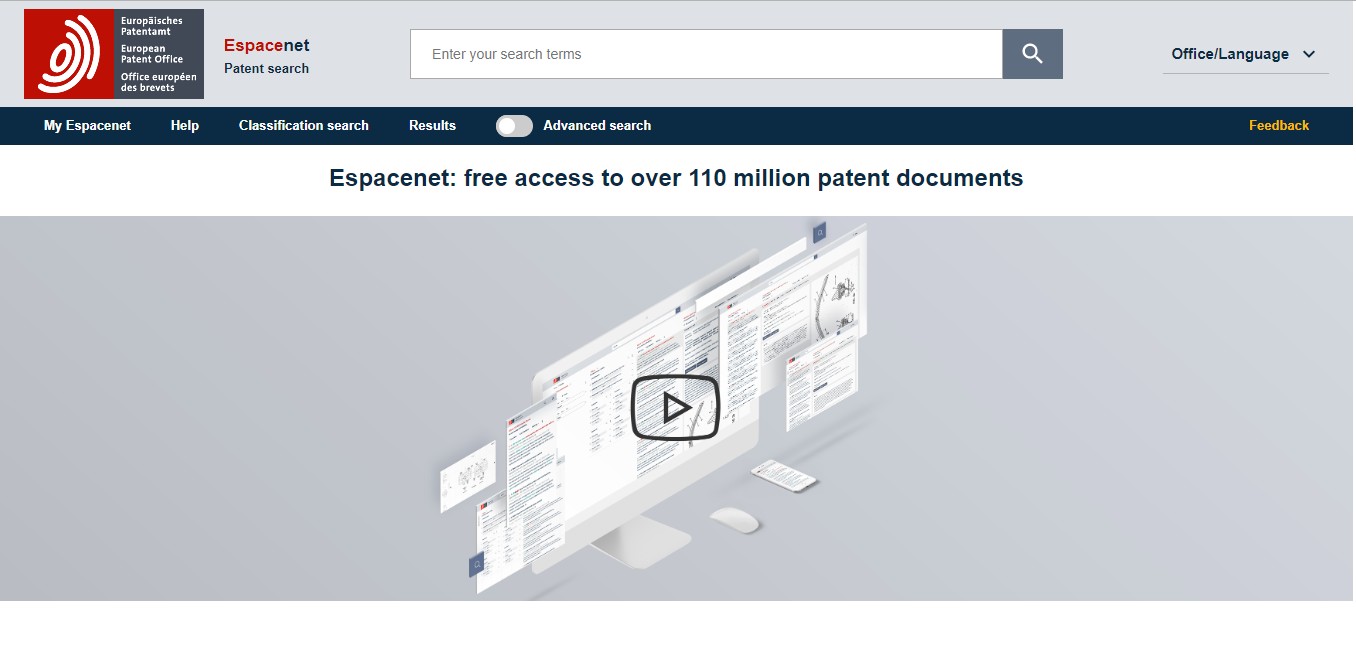
Espacenet was born out of the collaboration of the European Patent Office (EPO) and the European Patent Organization. The purpose of Espacenet launched in 1998, was to “revolutionize public access to international patent information”.
Earlier, the government organizations’ websites, Espacenet and United States Patent and Trademark Office (USPTO), were intentionally slow, difficult, and cumbersome because they didn’t wish to step on commercial vendors. But since then, Espacenet has upped its game, and it now offers patents from 97 countries with a database of more than 110 million patents.
The website uses an excellent machine translation system which is one of the most efficient patent translators, wherein you can even search for a patent with language combinations such as EnglishàArabic or ChineseàEnglish. It covers translations between English and 31 other languages. The translation engine was “specifically built to handle complex and technical patent vocabulary”, using “millions of official, human-translated patent documents” to train the translation engine.
You can search for patents on Espacenet by opting for either of the options below:
- Smart search: In smart search, you can enter up to 20 search terms (a maximum of ten terms per searchable bibliographic data), with or without field identifiers.
- Advanced search: In advanced search, you can perform an in-depth search with the following variables/categories:
- Title
- Abstract
- Publication number
- Application number
- Priority number
- Publication date
- Applicants
- Inventor(s)
- CPC
- IPC
- Classification Search: In this section, you can search for patents on the basis of CPC (Cooperative Patent Classification)
For anyone who is confused about how any of these features work or how to perform a basic search, the website has a video tutorial on almost every page.
Espacenet also gives the option to download the original patent in the form of a PDF. Additionally, one can also view the patent family of a particular patent.
Another interesting and useful feature of Espacenet is its ‘citation view’, which really helps in prior art searches. It provides all the citations of the complete family on a single page. The interesting part is it bifurcates the citations into inventor and examiner citations (which is difficult to get on other databases). The database also gives its users the option to start a patent that they can view as a list in the “My Patent List” tab. The main page also features Maintenance News and News Flashes. Users can also view all the patents they have gone through in the “History” tab.
For more information on conducting patent searches on Escapenet, click here.
USPTO Web Patent Databases

USPTO is a federal agency of the United States Government which is responsible for grants of U.S. patents and registration of trademarks.
The website not only shows published and applied patents, but it also gives information on what patents are, if your idea is eligible for a patent, the patent application process, patent maintenance, etc. In other words, a complete FAQ on patents and patenting process. Akin to patents, you can also find information about trademarks and IP, such as IP policy, international affairs, IP research & training, the trademark application process, trademark maintenance, and the basics of trademarks.
The main page features a newsfeed, and you can also find news related to a certain keyword when entered in the search bar.
A search bar at the top of the page shows CPCs as search results of keywords. You can find information about patents and trademarks in the “find it fast column.” Therein you can find both applied and approved patents. This is a major advantage of USPTO. Being a government organization, it has an accurate and updated status on all the patents. Despite the UI being barebones and the website not being ideal for patent analysis, you get the exact legal status of every patent along with a detailed description.
If you want to know how to efficiently conduct patent searches on the USPTO website, you should give this article a read.
PQAI
PQAI – an initiative by AT&T – is an open-source platform created to improve the patent process by enabling better prior art search and analysis.
The legal language of patents and complex features on other databases makes an inventor’s eyes water. PQAI uses AI and Natural Language Processing to make searching easy for inventors. Inventors can describe their invention in layman’s terms, and the database provides the 10 most relevant results (and more if they seek). Another biggest concern that inventors face is keeping their idea safe and confidential. They have to be wary of the safety features of the search tool they use.
That’s what makes PQAI ideal for inventors and prior art searches. The tool never logs any of its user’s search queries or results unless they explicitly tell it to save them for later reference.
 The database also provides “sample inventions” to try in the search bar so that users can get a better idea of how PQAI works.
The database also provides “sample inventions” to try in the search bar so that users can get a better idea of how PQAI works.
Disclaimer: GreyB is one of the supporters of PQAI and its initiative of making prior art searches easy for inventors.
Patentscope by WIPO

WIPO is one of the 15 agencies of the United Nations. The motive of the UN behind creating WIPO was to promote creativity, expansion, and protection of intellectual property. Headquartered in Geneva (Switzerland), the UN organization currently has 192 member states. Being established on 14 July 1967, WIPO holds a huge database. You can not only search patents but also trademarks and industrial designs.
Patentscope by WIPO is immensely powerful as it provides free access to 83+ million patent documents from multiple participating patent offices. Add to it the fact that, Patentscope can be used in 9 different languages.
One can change the language of the interface on the web. The default screen presented to you will be Simple Search which is one of the four search categories of Patentscope. You get the option to conduct a quick search or an advanced search.
The quick search option is pretty easy to use. You can use the name field to search for an inventor, assignee, applicant, etc. If you select FrontPage from the drop-down menu, the keyword will be searched in the Abstract of the patent only. The other options of the fields are sort of self-explanatory.
In WIPO’s Advanced Patent Search, you can use proximity operators and also the stem feature. Stemming considers your keyword as root and searches for other terms originating from it; for example, if you type a mobile, it will search for “mobile phone,” etc.
WIPO’s INSPIRE
WIPO launched its INSPIRE (Index of Specialized Patent Information Reports) tool in November 2020. After a quick rundown of the tool, it’s safe to say that it’s the ultimate picker of databases or, better yet, “A master tool”!
Intrigued?
Well, WIPO aims to speed up the innovation process, and this effort is directed toward helping you find the right tool based on your needs in a series of clicks. Whether you are a newbie to patent searching or a professional searcher, INSPIRE helps you find the exact tool for your current set of needs. Once you have your filters set, the tool gets you a list of the most suitable search systems.
The filters include systems that offer MT searches, like cross-lingual semantic search or non-Latin character search. The tool has a plethora of other filters to select from, a peek of which you can get from the GIF below. All you have to do is select what you need, and Voila! You have a database to choose from.
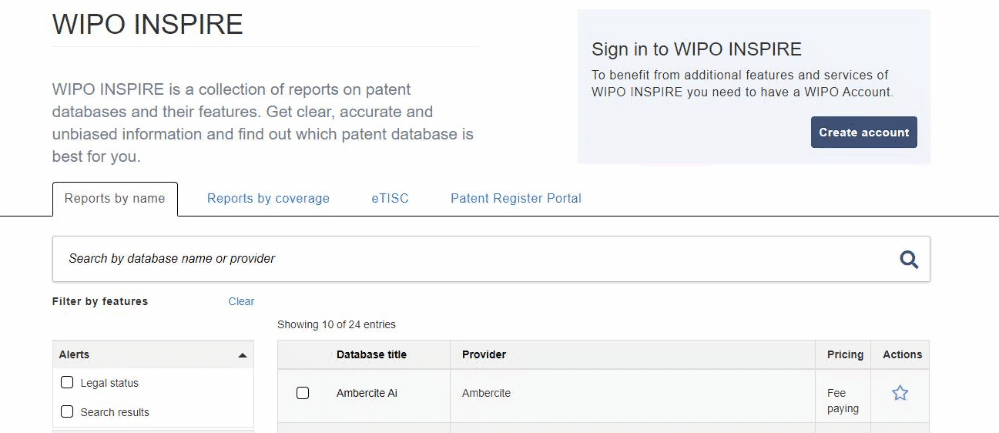
Not just that, the tabular reports then generated allow selected sources and their pricing to be compared at a glance. Opening the individual database reports provides slightly more detailed information from the vendor. The tool has so far proved to be quite useful and a much-needed advancement for the people in IP.
Lens.org
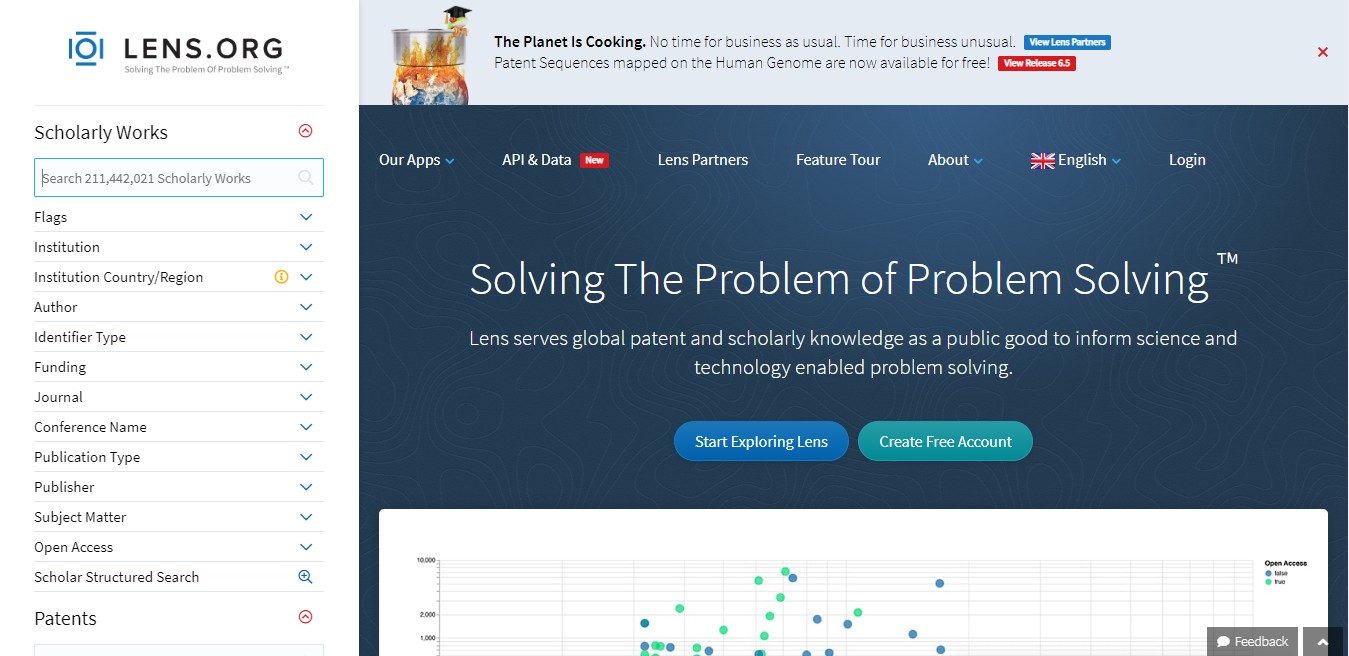
Lens.org is an initiative of Cambia and the Queensland University of Technology. Started in 2000, the open-source database currently displays over 119 Million documents from 105 jurisdictions. One of its primary features that set Lens.org apart from others is that it provides its users with citation data and NPL (non-patent literature). The website also boasts a very clean UI – even with a sea of features, and the webpage isn’t cluttered.
This database is also good if you wish to conduct a search on pharma-based patents, as this is one of the few databases on which you can search by gene sequences.
You can conduct searches on the basis of the following parameters:
- Numerous Variables
- Full-Text
- Title
- Abstract
- Inventor
- Applicant/Assignee
- Publication Number
- Filing Number
And you can also apply the following filter on your patent searches
- Flags
- Institution
- Institution Country/Region
- Author
- Identifier Type
- Funding
- Journal
- Conference Name
- Publication Type
- Publisher
- Subject Matter
- Open Access
- Query Tools
- New Structured Search
- Publishing Year
You can also search for lapsed, abandoned, or expired US patents via the INPADOC patent status and family information service. Patent families may be visualized using graphical trees as PDFs. Furthermore, dynamic charts are another feature of lens.org that could be useful in analyzing information.

One of the shining features this website possesses is that you can create a list of patents and run a separate analysis on it.
While free databases are great, when you need to conduct professional searches, you might need one of these paid patent search tools(listed below).
- Derwent
- PatBase
- Patseer
- Ambercite
- Drug Patent Watch
- Patsnap
- Patent Inspiration
- InQuartik’s Patent Search
Paid patent search tools are loaded with so many features (They are charging big bucks for a reason) that an entire article can be dedicated to individual databases. To keep it crisp and not further extend the scope of this article, we have listed down the prominent features of the top databases below.
Derwent World Patents Index
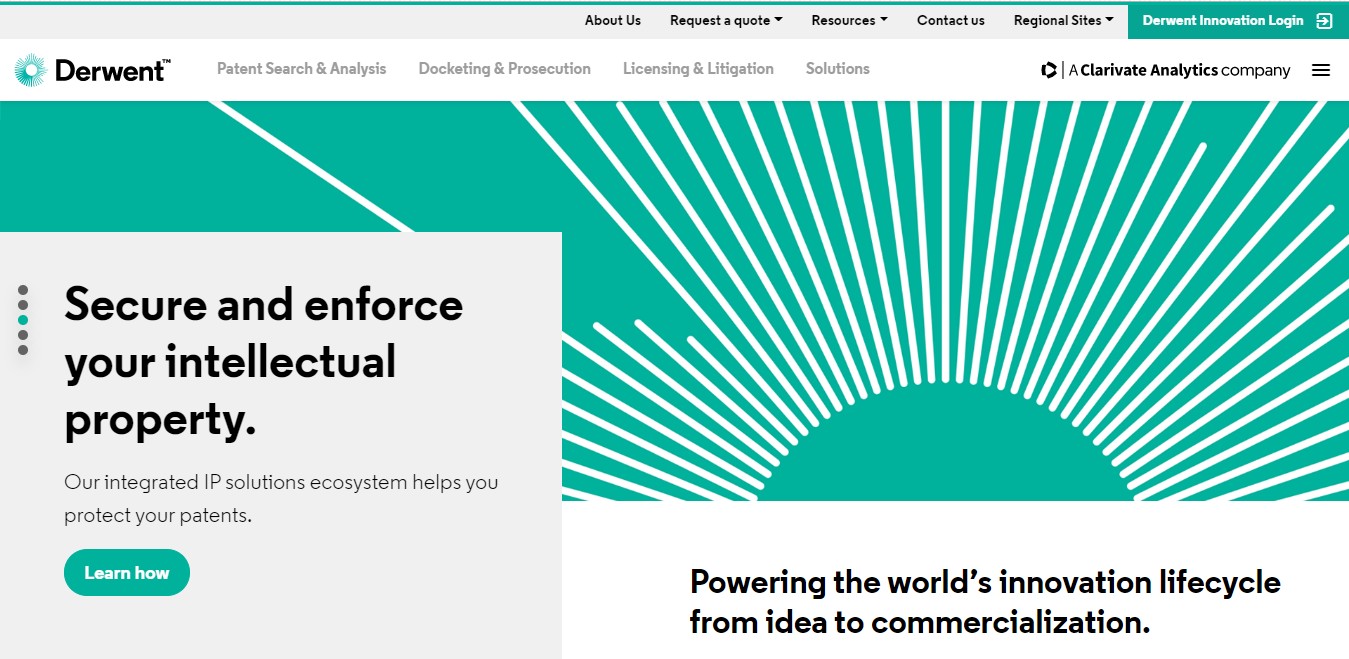
The Derwent World Patents Index of Clarivate Analytics is one of the top databases with the most coverage. Also known as the Derwent database, it covers patent documents from 44 patent issuing authorities across the world. Before 2008, the platform only allowed a maximum of 1 million new records a year. But due to the steady increase in unique patents filed each year, the number format of the Basic patent identifier (the Accession number) changed and now allows up to 3.6 million records per year to be added.
Derwent is easily the treasure trove for patents loaded with uncountable features.
One might think that all this data and uncountable features might result in a very complex UI, but DWPI features a very user-friendly interface. The central page has 7 options in big, bold, colorful boxes that deter confusion. Both narrow and broad data of patents can be downloaded here. This elaborate database is ideal for landscape analysis as it exhibits easy-to-understand charts and stats.
However, its key differentiating factor is not its searching functionality or its exhaustiveness but its capability to provide you an option to read the summary of patents in a non-legal language, i.e., in a simple technical language. This was a big roadblock for researchers which deterred them from using patent databases as reading the patents to decipher the technology was hidden behind the legal jargon. Not anymore.
If you are working in R&D, then Derwent is the best choice for you.
PatBase

The database contains 66 million full-text documents from over 105 authorities worldwide. PatBase features a very easy search syntax. While other databases offer the option to view your history, PatBase lets you save, erase and edit it. A prominent feature of this database is that you can conduct a citation search on it. PatBase also has its own thesaurus query builder.
While conducting patent searches, if you don’t like the record display, PatBase lets you change it according to your needs. You can also translate patents in most languages through machine learning.
The tool highlights keywords and full texts, and you can analyze both texts and keywords with the Analyzer tool. Through visualized patent data and detailed and transparent graphs, one can quickly get a 30000 ft overview of the technology. PatBase also allows you to share results as folders for collaborative work or publishing. These folders can be exported in the form of HTML, Word, or Excel.
A lot of analysts resort to PatBase as it holds patents from Israel. If you have any confusion about how to use the tools, PatBase has an elaborate PDF on how to use the tool, which can be accessed through the main page.
Patseer
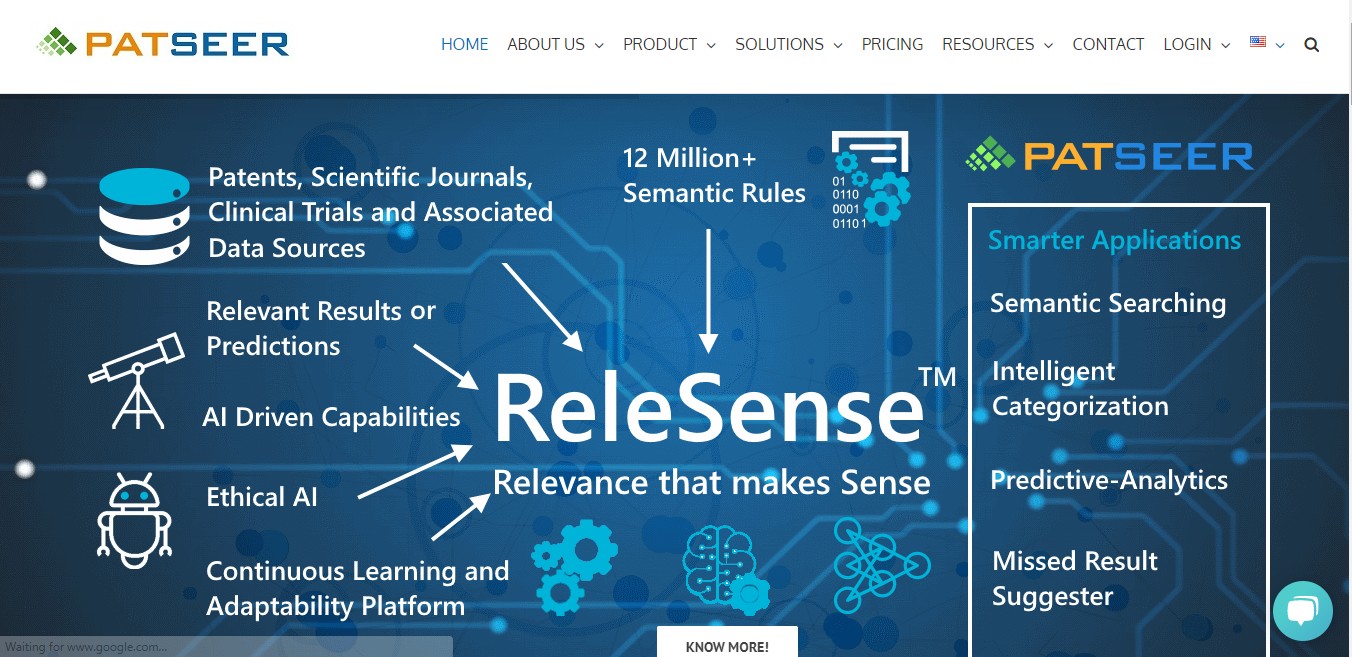
PatSeer, with its easy-to-use UI, holds 61+ million full-text records from 43 patent offices. You can also look up Corporate Trees of the Top 5000 companies. We have seen PatSeer grow from a small company to one of the leaders. This means they might be doing something really good.
Apart from variables like assignee name, inventor name, search history, saved searches, chemical synonym lookup, IPC/US/CPC classification definition search, term index lookup, multi-language translator, and number converter wizard, you can conduct searches using the following variables –
- Proximity
- complex Boolean with proximity
- command-line searching
- Search Scripting
- Wildcards
- left & middle truncation
- hit count cutoff
- Natural Language Search Aids
- Normalized Assignee Names
After the search, multiple detailed views of records can be opened in separate window tabs to allow easy comparison. You can analyze search results via multi-dimensional charts such as columns, lines, pie, areas, bubbles, heatmap, and geographical maps.
There is also the option to share your project data and control how others view it. The person doesn’t necessarily have to be a subscriber. The data can be exported in Word, Excel, CSV, or XML format.
Ambercite
Ambercite is an innovative patent database that offers a unique and powerful approach to patent searching and analysis. It stands out from traditional patent databases by employing a citation-based algorithm to uncover highly relevant patents with exceptional precision.

At the core of Ambercite’s technology is the concept of “family groups.” A family group represents a collection of related patents, including the original patent and any subsequent patents that cite or are cited by it. By organizing patents into these groups, Ambercite provides users with a comprehensive view of the patent landscape, enabling them to explore not only the original invention but also its subsequent developments and related technologies.
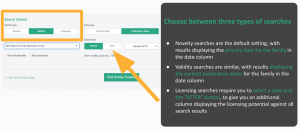
One of the key features of Ambercite is its forward citation-searching capability. Traditional patent databases primarily rely on backward citations, which show the patents that are cited by a particular patent. However, Ambercite takes it a step further by considering forward citations as well.
Drug Patent Watch
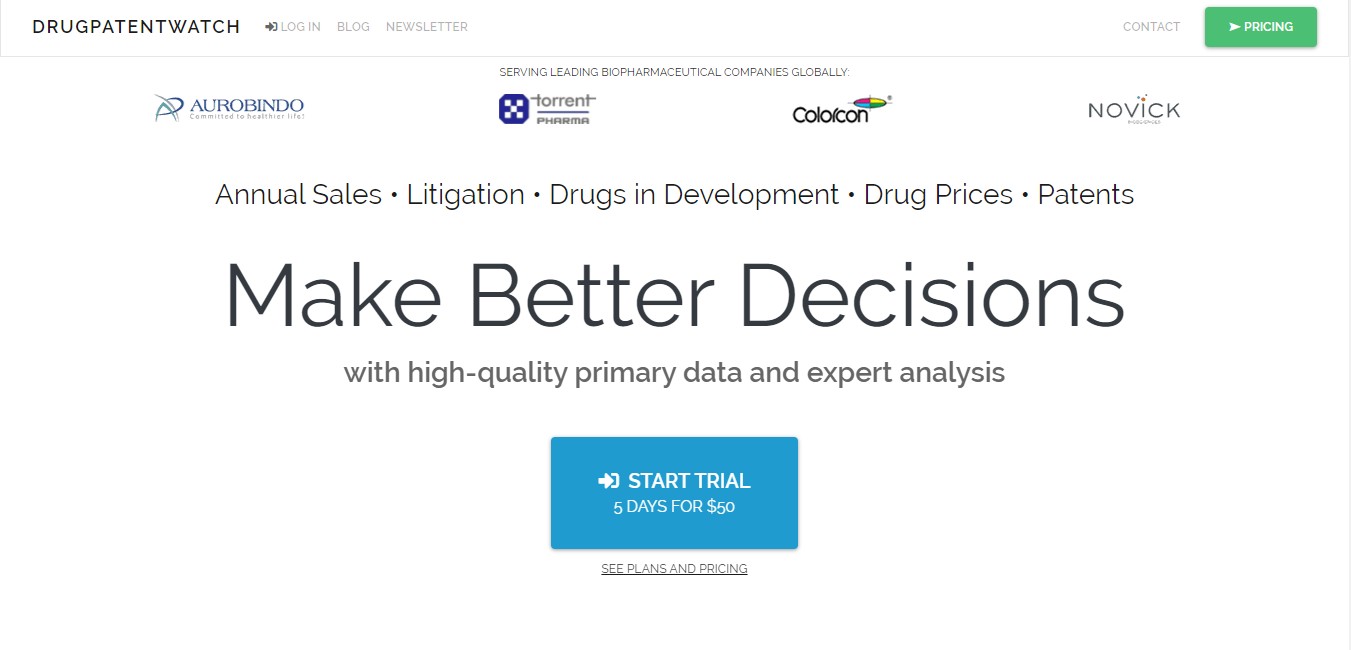
As you may have guessed from the name, this database majorly concerns itself with drug patents. It currently keeps track of drug patents from 134 countries.
Drug Patent Watch offers numerous benefits to its users, some of which are big-name organizations.
If you’re looking to file a drug patent, you can look for previously filed patents to develop a better strategy, examine contractual disputes, search for claims across all patents, and track litigation of patents. There is also the option to look for expired patents (helpful in clearance searches). If you’re looking to launch a drug in the market, Drug Patent Watch lets you –
- Assess market potential through historic sales figures
- Align distribution methods with information on where and how drugs are purchased
- Assess levels of generic competition
- Use drug price ranges to evaluate price elasticity
- Determine optimal prices before the launch
Apart from that, you can conduct landscape analysis, track drug development, explore new indications for existing drugs, anticipate 505(b)(2) approval, and track OTC switches, new formulations, and other drug improvements. It is a one-stop shop for all your drug patent search needs.
Patsnap

When it comes to a design patent database, Patsnap is the first name that pops up since it has a huge database from more than 40 countries.
Patsnap features a very user-friendly, easy-on-the-eye UI. It is one of the ideal databases for landscape analysis, getting insights, and analytics data. We believe they have the best user experience across all free and paid databases. They have figured out what type of information users need at what time, and they have figured out something to make it available to you. So you can reach that information in less than 2 clicks.
The one feature that sets Patsnap apart from others is its Innovation Word Cloud. This technology enables you to get an understanding of the type of terminology used within a technology field or a company’s portfolio. With the Innovation Word Cloud, you will see what are the most commonly used terms in the patents used to create the dashboard.
With the Wheel of Innovation, you can see the key concepts and subconcepts in the titles and abstracts of the patents used to create the dashboard.
You can conduct a search in Patsnap using any of the following search options –
- Simple
- Bulk
- Advanced
- Semantic
- Expand
- Classified
- Legal
- Image
- Chemical
- Literature
If you are thinking of design patents, think Patsnap [Sounds like a sales pitch, but it is not. Just a clever line; we hate to edit].
Patent Inspiration
Patent Inspiration is a visually driven and user-friendly database. It is a 69 million patent-rich database engine that is updated weekly and based on the DOCDB database from the EPO (European Patent Office) and contains bibliographic data from over 90 countries.
Patent Inspiration uses vibrant and interactive visualizations to convey patent data. Users gain full control of the visualizations, adaptable legends, titles, search fields, and graph types, all of which are easily exportable.
Patent data can be cryptic, which makes searching for a particular technology difficult. Patent Inspiration provides various tools such as AI Thesaurus and Text Mining, which makes searching for a technology much easier. This helps people who aren’t experienced in patent searching and reading gain access to knowledge of their industry.

The AI Thesaurus displays alternatives to the entered keyword that may be present in a patent. It finds relative terms as well as all context-related terms in your search field.

Text Mining uses adjectives in front of nouns and verbs in the same sentences and also allows customizable timelines. While the database works for Innovation managers, Strategic Managers, and Scientists, R&D Heads can get the most out of it. What sets this database apart is the fact that one doesn’t require background patent knowledge to scout for specific information in their area of interest.
Users can perform basic search functions on the website for free but need a paid membership to gain access to premium functions. Signing up for the premium services brings users a plethora of features such as watermark-free patent images, access to more advanced analyses, public sharing of reports, alerts to keep track of specific technologies/companies, custom export with templates for PowerPoint, and more.
Overall, the database helps accelerate the R&D process by providing competitive intelligence, technology mapping, and technology transfer opportunities.
InQuartik’s Patent Search
InQuartik, established in 2014, is a provider of patent solutions. One of their products is Patent Search. Well, what it does is self-explanatory. In the patent search process, it offers a range of features for patent professionals, businesses, and inventors alike. But, it isn’t one but multiple features that caught our attention.
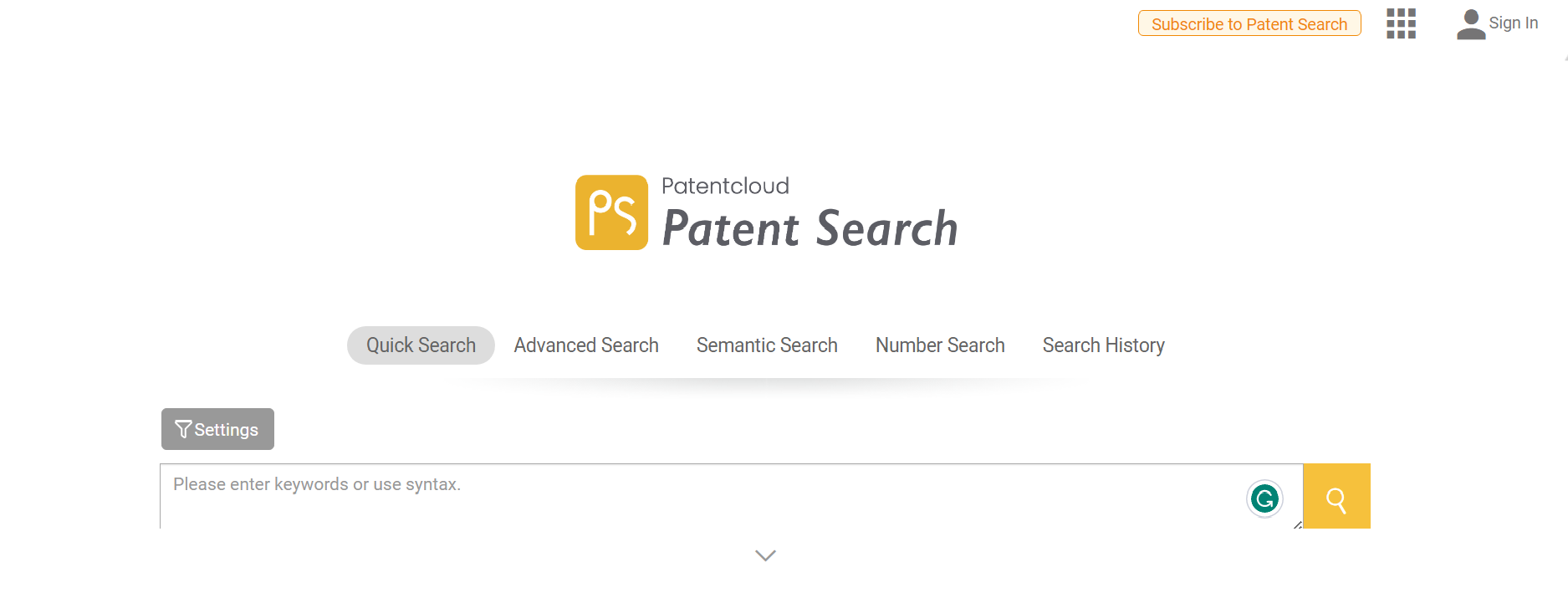
One of the standout features of Patent Search is the Quick Search function, which allows users to enter natural language queries in the search bar. The system then extracts relevant keywords, identifies synonyms, and adds related terms to help users find the information they need quickly and easily.
For more complex searches, the Advanced Search option comes in handy. Users can export their query history to an Excel file, allowing them to save time and avoid repeating the same task twice.
In addition to the above features, this patent database also provides filters that help users classify search results based on patent offices and the type of patent, and its status.
Top Patent Databases Based on the Region
When performing a patent search, a region-wise database comes in handy, and to aid you, we have covered them below. Moreover, they provide an English translation as well, and hence, easy to use for your search.
African Regional Intellectual Property Organization (ARIPO) Search System
This patent database provides access to a regional IP database that includes patents, industrial designs, utility models, copyrights, and plant varieties from 20 African countries. ARIPO collaborates with its member states to offer IP protection for traditional knowledge.
CNIPA Patent Search and Analysis
The China National Intellectual Property Administration (CNIPA) is a patent search database for Chinese patent information.
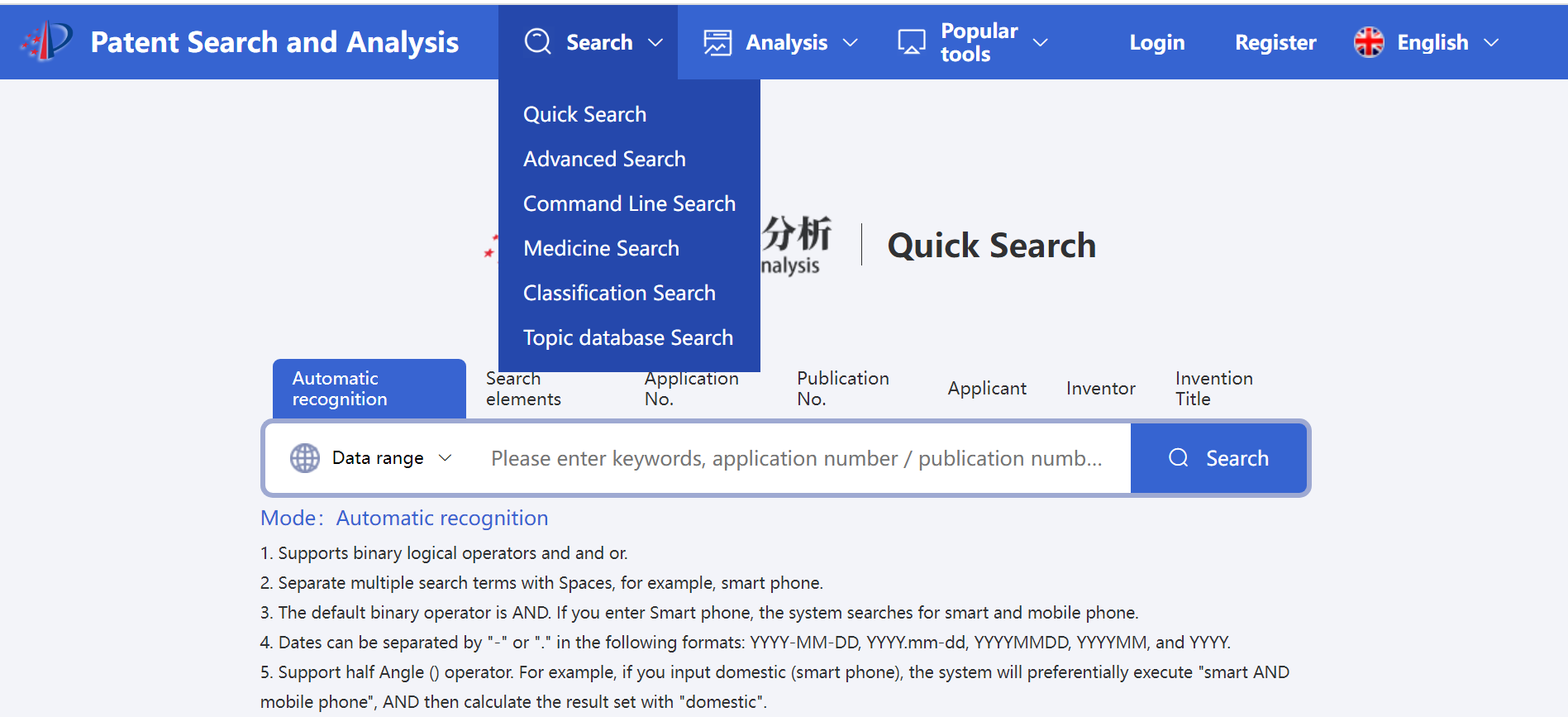
The search on the database can be performed in various ways, as depicted above.
Korea Industrial Property Rights Information Services (KIPRIS)
This is a free database that covers domestic and foreign industrial property information such as patents, utility models, trademarks, and designs owned by the Korean Intellectual Property Office. An additional section in this Korean Database is that of top searches. The user can see what is being searched the most on this platform.

Conclusion
When it comes to patent databases, every tool has its own advantages and disadvantages. Therefore, finding the right database that suits your specific needs is crucial. However, even after locating the perfect database for yourself, analyzing the vast amount of patent data can be overwhelming and challenging.
That’s where Slate comes in as your ultimate solution for patent analysis. As a one-stop destination, Slate is designed to streamline your patent analysis process. Instead of getting lost in the maze of patent databases, Slate comes to the rescue by efficiently reading and interpreting the patents for you.
If you’re intrigued by the idea of simplifying your patent analysis, it’s time to give Slate a try.
Authored by: Oorja Pandya and Annie Sharma, Marketing

